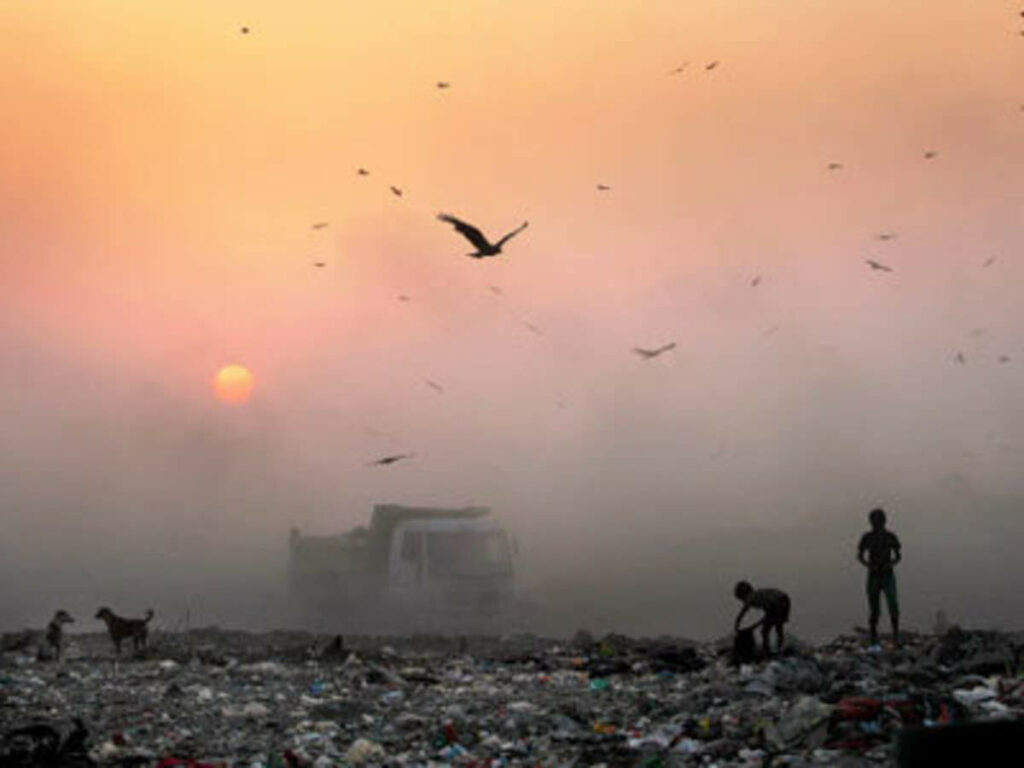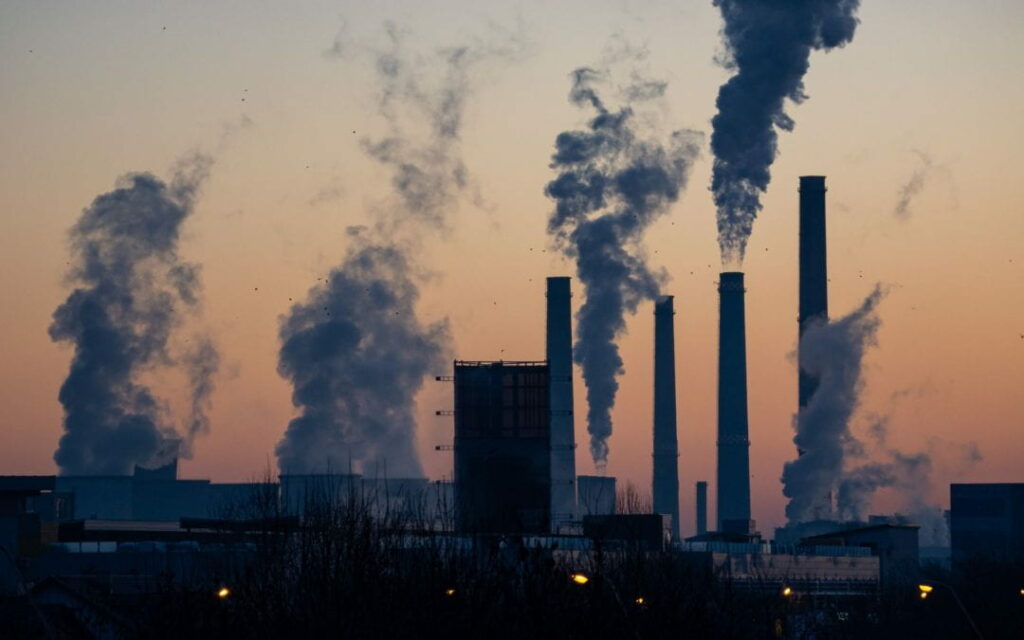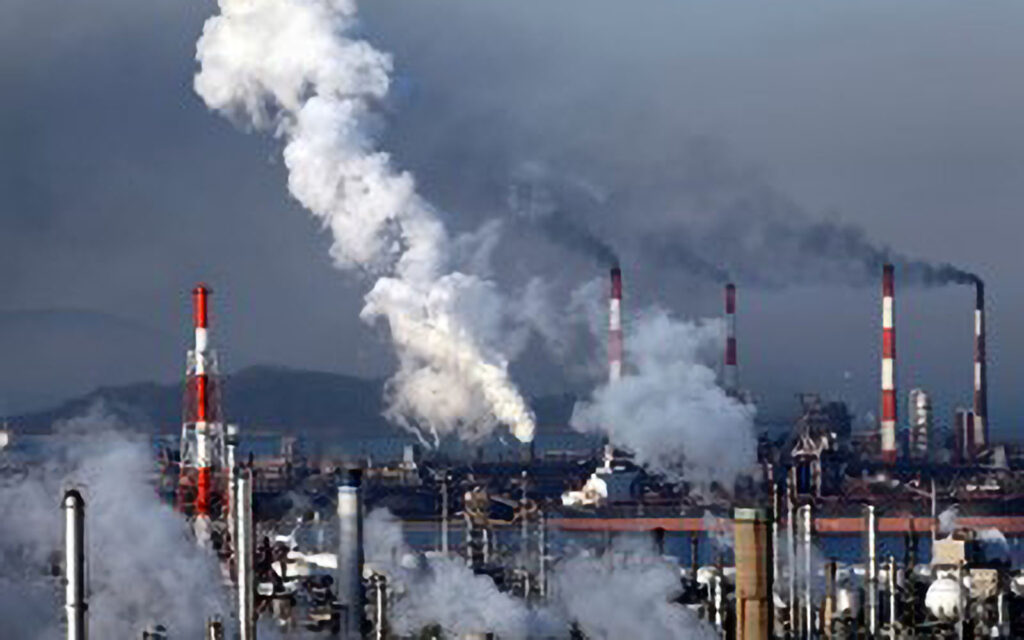New Delhi makes news every winter of toxic levels of air pollution. But the menace spreads over a much wider area in north India, affecting Punjab, Haryana, Uttar Pradesh, Rajasthan and Delhi. Smaller towns in these places, which have relatively clean air throughout the year, showed a spike in air pollution levels in early winter when farm fires cause the national capital to turn into a gas chamber, the report said.
This proves that pollutants are trapped due to atmospheric changes in a pattern similar to Delhi in at least 56 cities in these states for which data was available, according to the study by the Centre for Science and Environment (CSE), a New Delhi-based non-profit.
“Atmospheric changes during winter that lead to inversion, calm conditions, change in wind direction, and a seasonal drop in ambient temperature entraps pollution across north India. This is further tripped into severe category by smoke from farm fires and Diwali firecrackers during November,” the report stated.
The annual and seasonal trend analysis was based on data from 137 continuous ambient air quality monitoring stations in these cities for a period of January 1, 2019, to November 30, 2021.
Even smaller cities with lower annual average levels, record pollution levels that are as bad or even worse than Delhi. This demands action at scale and speed across all key sectors of pollution in the larger region.
Cities like Vrindavan, Agra and Firozabad (all in UP), for instance, have comparatively lower annual average particulate matter 2.5 (PM2.5) levels than Delhi. But during the early winter of 2021, their weekly average PM2.5 levels exceeded that of Delhi, the findings showed.

The National Capital Region (NCR; includes Delhi and 26 other cities/towns from surrounding states) and Uttar Pradesh experienced the longest periods of intense smog, with cities recording a significantly higher number of days with the air quality index in the ‘very poor and ‘severe’ categories, the report pointed out. Cities in Haryana were also not far behind in this dismal list. The report stated:
- Ghaziabad topped the list with 108 days of ‘very poor’ and ‘severe’ air quality until November
- Delhi recorded 94 days with ‘very poor’ or ‘severe’ air quality this year until the end of November
- Haryana cities Faridabad and Gurugram within the NCR recorded 75 days and 73 days of ‘very poor’ and ‘severe’ days, respectively
- UP cities outside NCR, including Kanpur, recorded 73 days of ‘very poor’ and ‘severe’ levels; Lucknow had 68 days; and Agra 57
- Even in larger Haryana, a small city like Hisar has recorded 74 days of ‘very poor’ and ‘severe’ air quality in 2021 so far
Delhi had a lower annual average urban pollution concentration than several cities in UP, the report showed. The two states were the most polluted in the region throughout the year, followed by Haryana. “The average of the urban concentration in UP outside NCR was 8 per cent higher than in NCR,” the researchers wrote in the paper.
In 2021, Ghaziabad (110 micrograms per cubic metre of PM2.5) was the most polluted city in the region and Moradabad (96 ug/m3 PM2.5) was the most polluted outside NCR, according to the findings. Monsoon months are the cleanest across the region but the deterioration of air quality post-monsoon with the onset of winter was fast in most cities studied. By November, most cities lost the advantages brought by a prolonged monsoon. The deterioration over monsoon levels was the fastest in Uttar Pradesh, where the PM2.5 concentration rose 5.4 times to 151 ug/m3 in November.
Usual suspects
The source of pollution across the region were common: Stubble burning, industrial and vehicular emissions, bursting of firecrackers during Diwali. Punjab recorded the highest number of fires in 2021, with a combined count of 76,518 during October and November, the analysis found. “Haryana recorded 11,015 incidences of fires, UP 5,187, Rajasthan 2,466 and Delhi 52.” The quantum of biomass burnt — a better indicator of emissions denoted by the fire radiative power (FRP) — was also the highest in Punjab (7.9 MW) during the period. It was followed by Rajasthan with 6.3 MW, Haryana 5.5 MW, UP 3.6 MW and Delhi1.3 MW.
There was an upward trend witnessed in both fire count and FRP in Punjab since 2012 when the monitoring started. In other states, though these metrics were on a decline, fire count doubled in Haryana and tripled in UP and Rajasthan this year, with minor increases in FRP as well, the paper noted. A spike in nitrogen dioxide (NO2) levels, attributed largely to vehicular emissions, was also observed in November October and September in the region.
Cities in UP outside NCR also fared poorly in this parameter, registering a 3.7 times increase in NO2 levels between September and November, the data showed. NCR cities saw a two-fold rise; Punjab and Rajasthan cities had a 2.5 times increase; while Haryana cities witnessed a 2.8 times jump, according to the report.
The impact of industrial pollution in worsening air quality was demonstrated by the fact that industrial towns remained polluted even during the monsoon when the region’s overall pollution level was low. Mandi Govindgarh (43 ug/m3) in Punjab, Yamuna Nagar (52 ug/m3) in Haryana, Bhiwadi (57 ug/m3) in NCR, Moradabad (53 ug/m3) in UP and Jodhpur (51 ug/m3) in Rajasthan were the most polluted, the report showed.
Diwali, an annual air pollution trigger for Delhi, pushed the AQI to toxic levels in cities across the region. This year, the impact was particularly devastating, with some of the worst AQIs recorded on Diwali night in the last three years in all major cities in the region, except Amritsar, Ambala and Chandigarh, according to the analysis. “Cities of UP and Rajasthan had seen the maximum increase on Diwali night.”
The analysis helps in understanding the pollution profile across the northern states and puts Delhi within the larger context of particulate pollution in north India, said Avikal Somvanshi, programme manager, Urban Lab, CSE. The analysis showed that the surge period of winter pollution was synchronised across the region but lasted longer in Delhi, NCR and UP. “Rajasthan recorded relatively less polluted air during rest of the winter.” There is, however, stark evidence to show how widespread the problem is, the authors wrote.
The researchers called for immediate, harmonised action in all states. The measures should be focused on ensuring access to “clean fuels and technology in industry and power plants, massive scaling up of public transport, walking and cycling infrastructure and enhanced municipal services for complete segregation of waste and recycling”, according to Roychowdhury. “This requires committed funding and a compliance framework.”
Tags; Air pollution, Atmospheric changes, Segregation, Deterioration, Air pollution.
Sources: DOE



